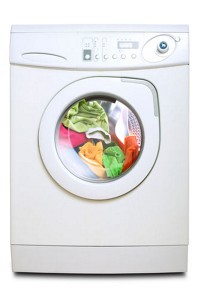Advertisement
Grab your lab coat. Let's get started
Welcome!
Welcome!
Create an account below to get 6 C&EN articles per month, receive newsletters and more - all free.
It seems this is your first time logging in online. Please enter the following information to continue.
As an ACS member you automatically get access to this site. All we need is few more details to create your reading experience.
Not you? Sign in with a different account.
Not you? Sign in with a different account.
ERROR 1
ERROR 1
ERROR 2
ERROR 2
ERROR 2
ERROR 2
ERROR 2
Password and Confirm password must match.
If you have an ACS member number, please enter it here so we can link this account to your membership. (optional)
ERROR 2
ACS values your privacy. By submitting your information, you are gaining access to C&EN and subscribing to our weekly newsletter. We use the information you provide to make your reading experience better, and we will never sell your data to third party members.
Analytical Chemistry
Nanosilver In The Wash
Environmental Chemistry: Fate of fabric-embedded particles depends on conditions, products
by Britt E. Erickson
October 2, 2009

Socks and other garments that stay odor-free thanks to antimicrobial nanoscale silver particles are increasingly showing up on store shelves. But what happens to the silver when such products are washed remains an open question.
New research by Bernd Nowack and colleagues at the Swiss Federal Laboratories for Materials Testing & Research provides a first look at the behavior of nanosilver textiles under real-world washing conditions (Environ. Sci. Technol., DOI: 10.1021/es9018332). The work builds on earlier studies conducted in water without detergents by researchers at Arizona State University (C&EN, April 14, 2008, page 10).
Nowack and colleagues found that the total amount and form of silver (dissolved or particulate) that leaches during washing varies significantly depending on the product and the conditions.
The researchers tested nine textiles and found that the percentage of total silver lost during washing varied from less than 1% to 45%. “Some particles are only loosely attached to the fiber; others are incorporated into the fiber,” Nowack notes. “Companies have a possibility to optimize their products by using a method that strongly binds the particles.”
More than half of the silver that was released in the washing machine was in the form of particles larger than 450 nm in diameter. The researchers have yet to characterize the particles or determine what happens to them during wastewater treatment.
Nowack and colleagues also looked at the effects of pH, surfactants, and oxidizers. Under typical washing conditions (pH 10–11, with high levels of surfactants), dissolved concentrations of silver were 10 times lower than at pH 7. But when a bleaching agent such as hydrogen peroxide or peracetic acid was added, the dissolution of silver was greatly accelerated.
The study “gives us a much better idea of how silver might be released into the environment from the new wave of silver-nanoparticle-containing fabrics,” says Andrew D. Maynard, chief science adviser at the nonprofit Project on Emerging Nanotechnologies.
The results do not contradict the previous Arizona State study. But they do show that washing conditions matter in the leaching of silver nanomaterials from fabric. Understanding nanomaterial behavior “will certainly involve more than swishing socks around in water,” notes environmental engineer Mark R. Wiesner, director of Duke University’s Center for the Environmental Implications of Nanotechnology.





Join the conversation
Contact the reporter
Submit a Letter to the Editor for publication
Engage with us on Twitter